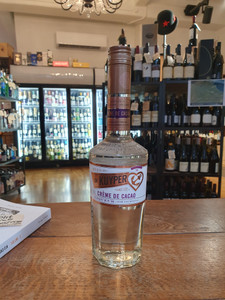
"Intense aromas of oranges and white flowers on a lemony ray. A beautifully seductive palate with fruity aromas and a touch of honey.”
Mas de Daumas Gassac
Mas de Daumas Gassac has achieved acclaim around the world for its red wine, an intricate blend of grape varieties from Cabernet Sauvignon and Merlot to Nebbiolo, Dolcetto and Pinot Noir.
It is produced on relatively high ground in the hinterland of Languedoc-Roussillon, on sloping vineyards between Aniane and St-Guilhem Le Désert, the medieval village that lies in the steep gorge of the Hérault river and is recognised as one of the most beautiful villages in France.
Founded by the late Aimé Guibert in 1971, with his wife Véronique, Daumas Gassac has spent decades in the vanguard of a movement towards quality in a French region traditionally more associated with cheap table wines.
Cabernet Sauvignon generally makes up at least 70% of the final blend in the top wine, Mas de Daumas Gassac rouge, but this rose as high as 79% in the highly rated 2015 vintage.
The remainder can come from a range of grape varieties in any given year, including the classic Bordeaux set of Merlot, Cabernet Franc, Petit Verdot, Carmenere and Malbec, but also Tannat, Pinot Noir, Nebbiolo, Barbera, Dolcetto Tempranillo, Baga, Saperavi, Bastardo and others, as Andrew Jefford reported following a previous tasting at the winery in 2014. Daumas Gassac’s 2016 label, for instance, cites 73% Cabernet Sauvignon, 7% Merlot, 4% Cabernet Franc, 4% Petit Verdot and 3% each for Malbec, Pinot Noir, Nebbiolo and Dolcetto.
The wines themselves are known for being relatively restrained by the standards of Languedoc, and also Bordeaux, with modest tannin levels and fresh acidity. ‘If you’ve never tried Mas de Daumas before, it’s possible to be underwhelmed on the first occasion,’ wrote Andrew Jefford in his column in the June 2014 issue of Decanter magazine. ‘These pure, limpid, fresh red wines, though, drink very attractively. As this tasting proved, they also age very well, carried through time by their balance and poise.’
The wines are generally aged in oak for between 12 and 15 months, using barrels between one and seven years old, according to the estate. Annual production of Mas de Daumas Gassac rouge is around 100,000 bottles plus up to 4,000 magnums.
Aimé Guibert died in 2016 aged 91. The estate is today run by his sons, Samuel, Roman, Gaël and Basile Guibert.
Viognier
Viognier is an incredible aromatic white grape variety. It is most famous for its heady peach and apricot-filled white wines of Condrieu and Chateau-Grillet in the northern Rhone Valley of France. Some decent examples have sprouted up across the south of France and in the new world most notably in California and Australia where it is hot enough to get it ripe enough.








